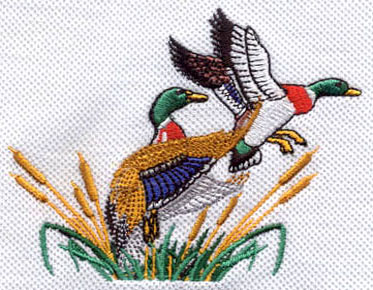Different Factors that Affect the Digitizing Size
Embroidery digitizing is a process of stitching designs onto fabrics, usually done through computers and machines. Digitizing embroidery technology can convert any design shape into a code that is suitable for embroidery, and use a machine to embroider onto the fabric. However, in the process of embroidery digitizing, the size of the design is crucial because it affects the quality and effect of the embroidery. So, what is the best size for digitizing embroidery designs? Here is a comprehensive analysis.
Different Factors that Affect the Digitizing Size
Firstly, the best size of embroidery design varies depending on the embroidery range of the machine. Before embroidery, the embroidery range of the machine needs to be determined. For home or small commercial machines, the embroidery range may only be a few inches. For large commercial machines, large patterns can be embroidered with sizes up to several feet. Therefore, determining the embroidery range of the machine is the first step in determining the best design size.
Secondly, the complexity of the design also affects the best size of digitizing embroidery designs. For complex designs, smaller sizes may not provide enough detail. Conversely, a design that is too large may make the details too dense, resulting in problems with the embroidery. Therefore, the complexity of the design needs to match the size of the design to achieve the best effect.
Thirdly, the intended use and position of the design also need to be considered. For example, the size of a left chest pocket logo should be smaller than that of a full back logo. Similarly, if the design is to be placed on the edge or corner of an area, its size should match the size and shape of that area.
Fourthly, the material of the digitizing embroidery design also needs to be considered. Different materials have different requirements for design sizes. For example, the embroidery effect on cotton fabrics and polyester fabrics will be different, so the best design size needs to be determined based on the characteristics of different materials.
Finally, the size of the design should also consider the needs and preferences of the target audience. For projects such as children's clothing or toys, a smaller design size may be required. For high-end brands or specific markets, a larger design size may be needed to highlight brand features.
In conclusion, the best size of
digitizing embroidery designs varies due to multiple factors, and multiple
factors need to be considered to determine the best design size. To help
customers achieve the best design effect, Eagle Digitizing's professional digitizers
provides rich digitizing size suggestions. They provide the best size
suggestions for customers based on their requirements, embroidery range of the
machine, complexity of the design, intended use and position of the design, and
the needs and preferences of the target audience. Therefore, if you need embroidery digitizing services, please
choose Eagle Digitizing. They will provide you with high-quality digitizing
embroidery designs and professional digitizing size suggestions.



